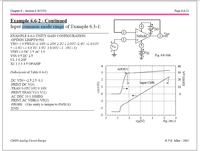Junus2012
Advanced Member level 5
Hello
Please I would ask why simulating the ICMR from the buffer connection, why does the output is assumed to be related to the input why not to the output
Thank you
Please I would ask why simulating the ICMR from the buffer connection, why does the output is assumed to be related to the input why not to the output
Thank you
